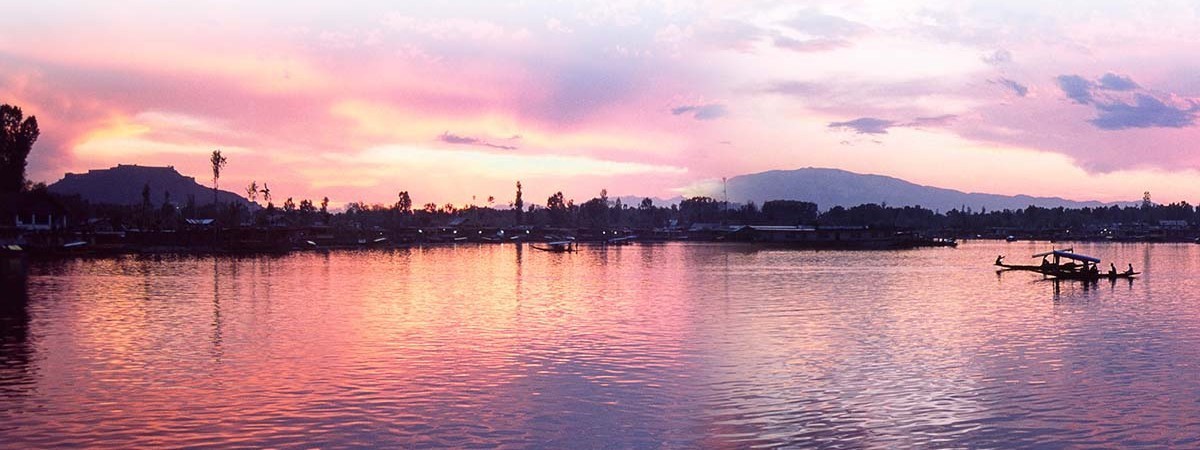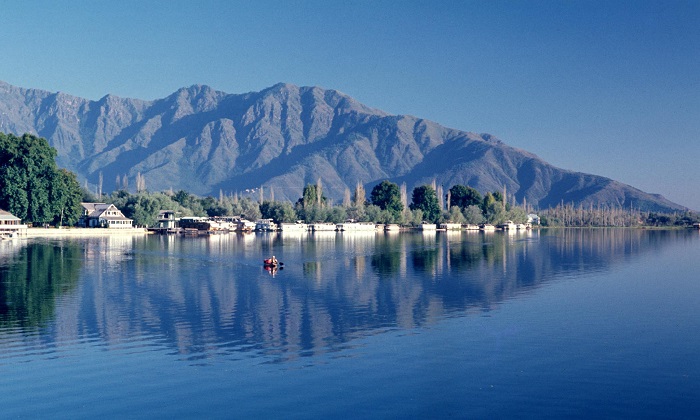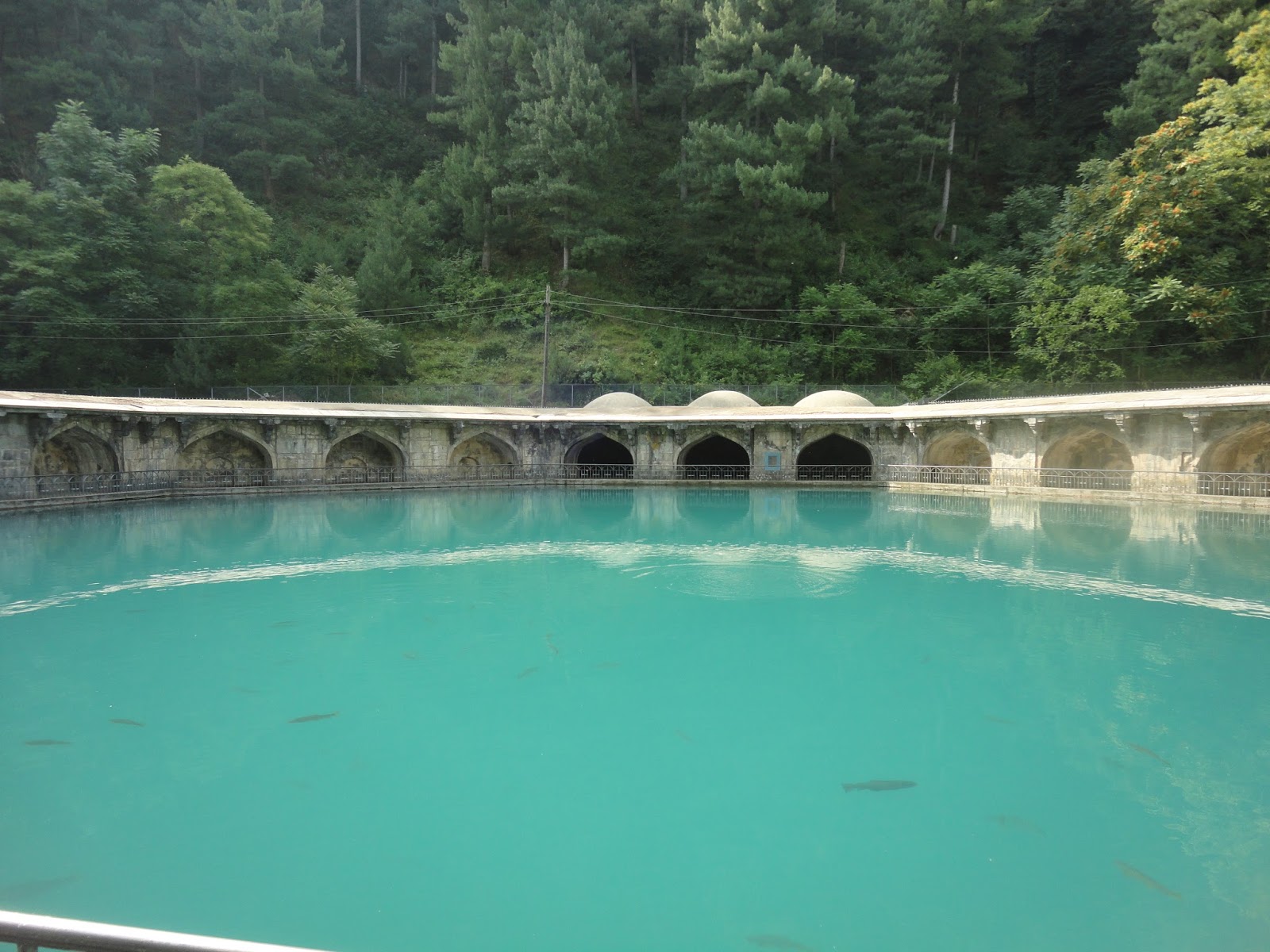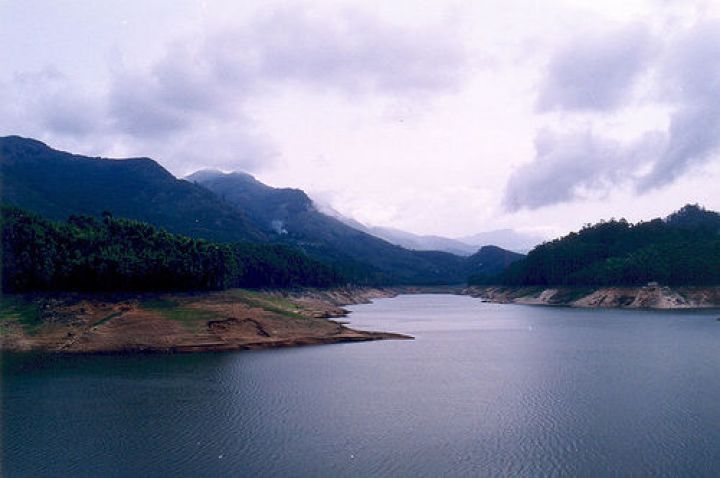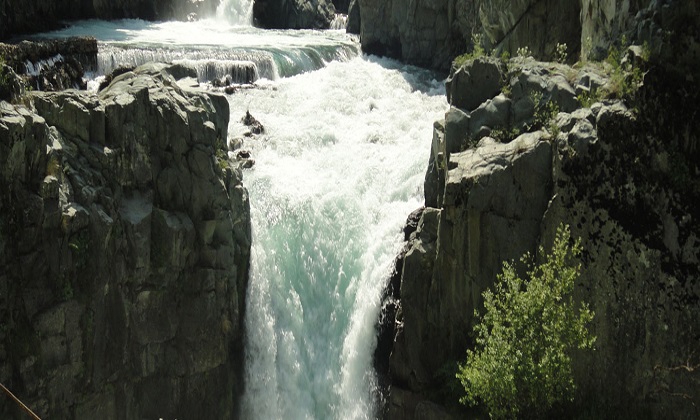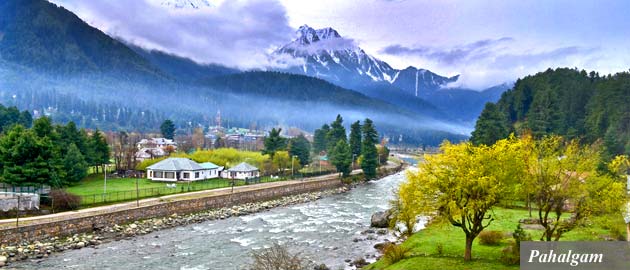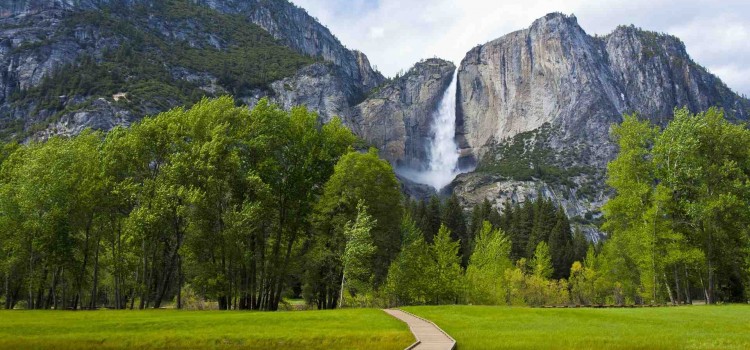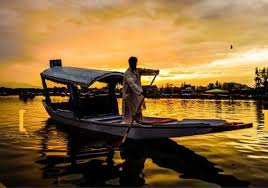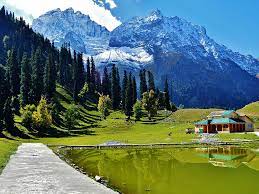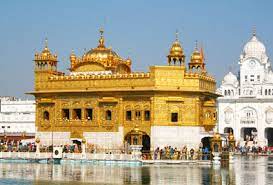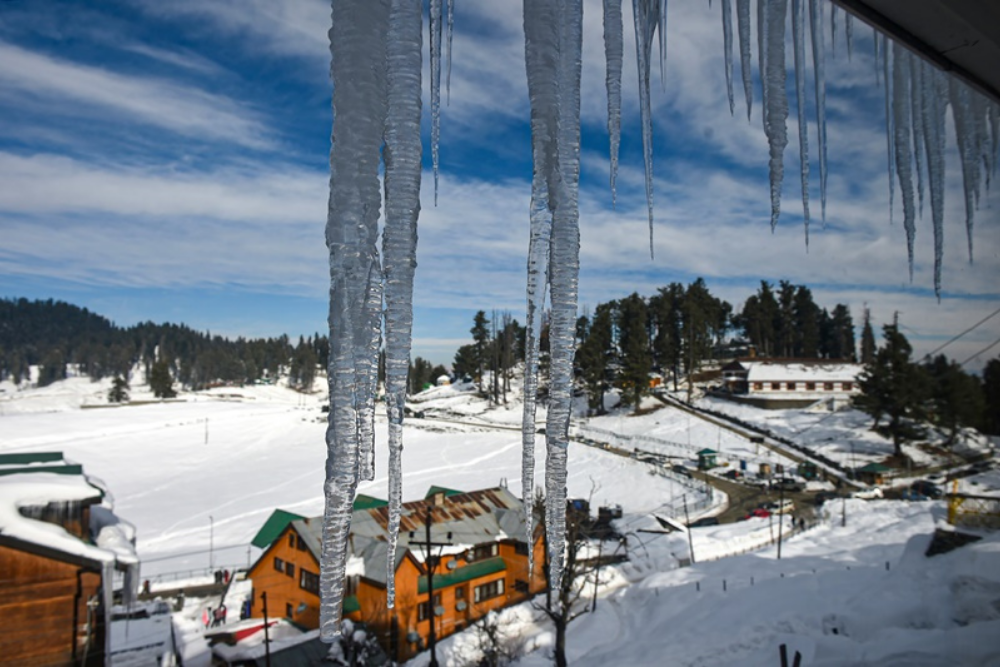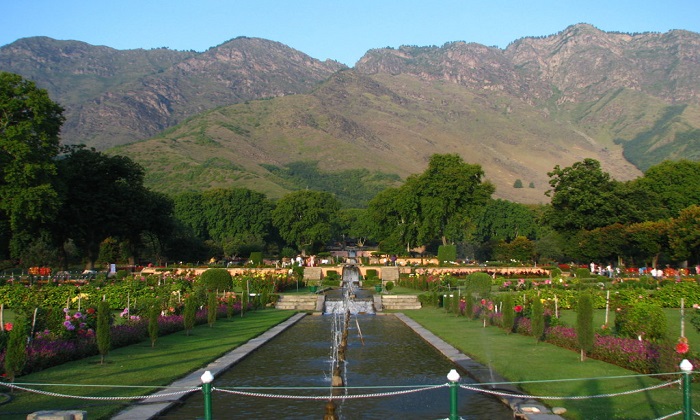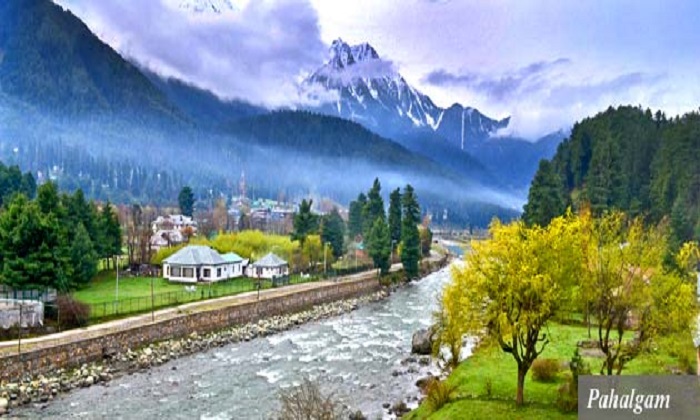4 days 3 nights
The Dal Lake which has the length of 8 Km long and a width of 4 Km, spreads over a total of 26 Sq. Km. The fascinating Dal Lake is divided into two smaller ones the Lokut (small) and Bod (big) Dal. The south western part of the lake has a maximum depth of approximately 12 M. the Dal Lake gets some of its water from spring but is also supplemented by water from the mountain lake, Mar Sar.
In the western part of the Lake one can glimpse a few islands, some bigger, some smaller. Its shores are very fertile and surrounded by willows. Potato, tomato, pumpkin, cucumber, radish and lots of other vegetables are grown here cultivation of the floating gardens which also lie in this part of the lake is another interesting feature. These gardens consist of reed rafts of different lengths and a width of approximately one and a half by three meters and are covered by 1020 CM thick layer of earth and mud. Vegetables and melons are grown on these artificial floating islands.
Dal Lake is, initially, one of the most confusing parts of Srinagar for it's not really one lake at all, but three. Further more much of it is hardly what one would expect a lake to be like - it's a maze of intricate waterways and channels, floating islands of vegetation, houseboats that look so firmly moored they could almost be islands and hotels on islands which look like they could simply float away.
Srinagar is the capital of the state of Jammu and Kashmir and it is conveniently located in the Kashmir valley. This city is situated on both banks of the Indus River and Jhilam River. The city is popular for its lakes and houseboats. These water bodies are of immense ecological significance. The most famous water bodies in Kashmir are Dal Lake and Nigeen Lake in Srinagar. They are famous for housing a multifarious eco-system and affording scenic surrounds.
On your visit to Kashmir, you must not miss a chance to go for Sightseeing in Srinagar and also drop by the Nigeen Lake in Srinagar. Nigeen Lake in Srinagar branches out from the Dal Lake. The Nigeen Lake in Srinagar lies to the east of the city and at the foot of the Zabarwan Mountain. The Shankaracharya Hill on the south and Hari Parbat on the west enclose the Nigeen Lake in Srinagar.The sylvan surrounds of the lake will surely mesmerize you. The lake is flanked by majestic willow and poplar trees. There are many houseboats that can be seen in the Nigeen Lake in Srinagar. Thus, Nigeen Lake in Srinagar presents a charismatic sight.
You can spend some beautiful moments on your visit to Nigeen Lake in Srinagar. You can avail of the shikaras (wwoden boats) and experience the picturesque views of the lake. A relaxed ride on a shikara along the placid waters of the Nigeen Lake in Srinagar is one of the most popular activities herein. Shikaras have become one of the popular tourist attractions since the tourists can take a journey along the Nigeen Lake in Srinagar. Ferries are also available in the lake. You can also hire a bathing boat to move around the lake. Do not miss a chance to experience some exciting water skis and motor rides in Nigeen Lake in Srinagar.
Nigeen Lake of Kashmir is an offshoot leading from the Dal Lake. The Nigeen Lake is located to the east of the city, at the foothill of the mountain Zabarwan. On the edges of the Nigeen Lake are a number of willow and poplar trees. The reflection of these tees in the water of the lake lends it a beautiful view. Surrounded by Shankaracharya hill (Takht-e-Suleiman) on the south and Hari Parbat on the west, the Nigeen Lake in Kashmir presents a charming sight and is most popular lake in kashmir. Shikaras, ferrying people to and from the lake, are a fascinating feature of the lake. Bathing boats as well as water-skis and motor launches are also available for hire at the lake.
Nigeen Lake in Srinagar presents a charismatic sight. Timberland Tour & Travels offers various Kashmir tour packages and Kashmir budget tours to enjoy Kashmir vacations.
Verinag is named after Nila Nag, the son of the wise saint, Kashyap Rishi, who reclaimed the Kashmir valley, the original shape of this spring was in the circular form of a kund. In 1620, the Emperor Jahangir had the shape changed into the traditional Mughal octagonal. The spring, which has a circumference of 80m in enclosed today by a brick wall under which are vaults.
spring in Verinag in Kashmir is considered as the chief source of the river Jhelum.
These lake - like waters have a limpid clarity in which the verdant surroundings of pine trees are mirrored. Fish swim in the cool depths and this picturesque setting that so captivated the Mughal emperors has lost none of its pastoral charm over the centuries. The lawns around the spring are a beautifully manicured green, and banks of massed flowers add splashes of colour to this symphony of greens and browns.
A Shaivite shrine just outside the complex draws pilgrims every year, who come for a ritual dip in the spring of the first day of the year according to the lunar Hindu calendar.
Some 2 km away is Veravurthur, supposed to be the source of the Jhelum. The waters of the many nearby springs, called collectively, Sapta Rishi, have their confluence at Sangam, where people bathe on festival days. The birth of the river is celebrated annually with a fair.
Verinag is made even more special by the sight of several varieties of colorful flowers and mountain air.We offer kashmir budget tours and kashmir tour packages to visit kashmir paradise.
Manasbal Lake is located about 30 km north of Srinagar, the summer capital of Jammu and Kashmir State. It has predominantly rural surroundings with three villages, Kondabal, Jarokbal and Gratbal overlooking the lake.Manasbal in Kashmir is the deepest lake of the valley with beautiful lotuses in it.
Manasbal Lake is considered as the 'supreme gem of all Kashmir lakes' with lotus (Nelumbo nucifera) nowhere more abundant or beautiful than on the margins of this lake during July and August. It is the deepest lake of Kashmir valley and perhaps the only one that develops stable summer stratification. Manasbal lake is classified as warm monomictic lake and circulates once in a year for a short time. The other lakes in the region either have weak stratification or are polymictic. Close to the northern shore are the ruins of a fort which was built in 17th century by a Moghul king to cater the needs of caravans that used to travel from Panjab to Srinagar. On the south, overlooking the lake is a hillock-Ahtung which is used for limestone extraction. The eastern part is mainly mountainous and towards the north is an elevated plateau known as 'Karewa' consisting of lacustrine, fluviatile and loessic deposits.
The lake has no major inflow channels and the water supply is maintained through spring water inflow and precipitation. An outlet channel connects the lake with the Jhelum River. The outflow of water is regulated artificially.
The local population uses the lake as a source of water, for fishing and for obtaining food and fodder plants. Many people are involved in harvesting and marketing of lotus rootstocks which are extensively eaten in the State. In recent years, tourism has caught up with the Manasbal Lake in a big way and as a consequence there are lots of pressure on the terrestrial ecosystem which is being exploited at many places.
The origin of the lake is still unresolved but there is no denying the fact that Manasbal Lake is very ancient. The local people believe in the legend that the lake is bottomless. Over the years as a result of human pressure the lake has become eutrophic. The water body is virtually choked with submerged weeds particularly during summer which is the high tourist season. The deep water layers become anoxic with considerable accumulation of hydrogen sulphide .
Manasbal in Kashmir It is one of the largest natural haunts of aquatic birds In Kashmir.We offer various kashmir tour packages and kashmir tour packages to visit kashmir paradise.
Aharbal is the famous,highest and gigantic waterfall of the Kashmir Valley. Aharbal is located some 75 kms Aharbal, kashmir from Srinagar and towards the south. By its dimensions the fall is not what can be called a gigantic one, just some 20 metres or so. However, the volume of water that comes crashing down on the rocks below does amuse one. Topography resembles to other tranquil villages of kashmir.
While visiting Aharbal, what is more entertaining is the trip itself. While reaching the place, the apple orchards of Shopian look quite pleasing. The road curves in loops just before the fall and descends sharply. The roaring water at the fall is quite fascinating and one can directly make it up to the edge of the fall which is formed by hard granite boulders.
The stream that flow just 50 m from the fall is known for yet other amusement, the trout fishing. The water isn’t too deep and trout fishes breed in small rock crevices. There is an office of the fisheries department that offers permits. The stretch extends for several kilometers.
Aharbal is also famous for trekking as the treks leading to the beautiful lake called Kounsernag. Treks alongside the lake in the Pir Panjal range are quite popular among the trekkers. The most pleasing features remain to be the tranquility of the place, the beautiful stream running through the region, small hamlet and coniferous trees.
There are few lush meadows at Aharbal and one among them called Kungawatan is very popular. Aharbal can be reached either taking the Pulwama Shopian road or taking the Anantnag road. As was mentioned earlier, the entire trip is plasing filled with all kinds of surprises. The hill side, landscapes and orchards reveal some fantastic faces of the nature.
Aharbal is ideal for the day visit as there are no deluxe hotels and accommodation facilities. Also food can be a problem for travelers and it is recommended to carry eatable while traveling to this place. So far as real amusement is considered, trekking, angling and photography are the best activities to engage in.
The famous waterfall at Aharbal is located some 75 kms Aharbal, kashmir from Srinagar and towards the south.We offer various kashmir budget tours and kashmir tour package to visit Aharbal in kashmir
©2022 Developed by E-MATRIX SOFTWARE SOLUTIONS

